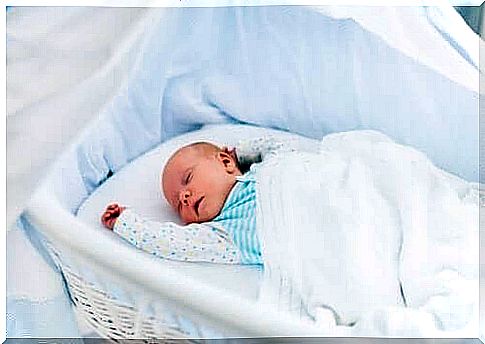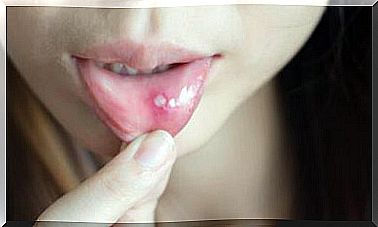Methods Of Prevention And Treatment For Plagiocephaly

In today’s article, we present the main methods of prevention and types of treatment for plagiocephaly.
Plagiocephaly is the most common craniofacial abnormality. It consists of an asymmetrical deformity of a baby’s skull. Because of it, the skull appears somewhat flattened in the posterior (occipital) region and has a rhomboid shape.
Plagiocephaly is a purely aesthetic problem and does not affect the intellectual development of the baby. Its incidence is high. At the root of the imperfection is the position in which the baby sleeps. For example, plagiocephaly can occur when the little one sleeps on his back or with his head always tilted to the same side.
But there are also cases of plagiocephaly at birth. In such situations, the cause may be narrowing of the mother’s pelvis or complications during childbirth.
What causes plagiocephaly?
Plagiocephaly occurs after exerting pressure on a baby’s skull. This can occur during fetal development, at birth or later.
The number of cases of plagiocephaly has increased significantly since pediatricians began recommending sleeping on their backs in babies. This position can prevent the infant’s sudden death syndrome during sleep, but involves continuous pressure on the posterior region of the skull and, ultimately, its deformity. And slings increase the risk of plagiocephaly.

Other situations in which plagiocephaly may occur are:
- Premature birth
- Congenital muscle torticollis (because of this, the baby has to always sleep on the same side)
- Inadequate positions in the uterus
- Birth injuries
What are the symptoms of plagiocephaly?
As mentioned earlier, plagiocephaly is a purely aesthetic problem and will not compromise the intellectual development of the baby. In the worst cases, it produces facial and cranial asymmetry and is very visible. The disease can alter the alignment of the ears, creating a swelling on the forehead.
Plagiocephaly will have a major impact on a child’s self-esteem. Therefore, certain measures must be taken in advance to prevent and treat this imperfection.
How can plagiocephaly be prevented?
Because babies need to sleep on their backs, it is important to move them regularly so that the position of the head changes. The head should rest alternately on the right and left side.
At the same time, doctors recommend that babies sit “upside down” when they are awake (but not when they are sleeping). A useful way to help little ones develop their motor skills is to stretch them on their stomach. Lay the baby on your chest, bed or any other comfortable surface. It is best to play with him while he is in this position, but do not forget to constantly monitor him. Another benefit of this activity is that it increases the baby’s muscle strength.
The baby’s head should not be in the same position for a long time. Hold it in your arms or place it in chairs that do not put pressure on the skull. Avoid stools that inhibit the baby’s movements, such as cars. If you have to use such an accessory, allow the little one to take breaks and help him change position.
You have various interactive strategies at your disposal. For example, place the toys on one side of the crib. This will encourage the little one to turn his head in that direction. Another option is to gently lift the mattress and tilt it to one side.
What types of treatment are available for plagiocephaly?

The following types of treatment for plagiocephaly will only be used if the measures presented above have not worked:
- First, the baby may wear a special helmet, which applies moderate pressure to the skull. This method also prevents the baby’s head from tilting towards the already deformed part. The headphones represent a dynamic system of orthotic cranioplasty. Babies can wear them from the age of three months, but they must be supervised by a doctor.
- In the most severe cases, surgery may be used. Doctors will only recommend this option if all others have failed.
conclusions
Apply all the preventive measures presented in this article to protect your baby against plagiocephaly. The simple exercises and solutions I have described will keep unsightly problems at bay.
Remember, you should consult a doctor if you have questions or perceive any abnormality. Only a specialist can tell you what you need to do to help your baby.









